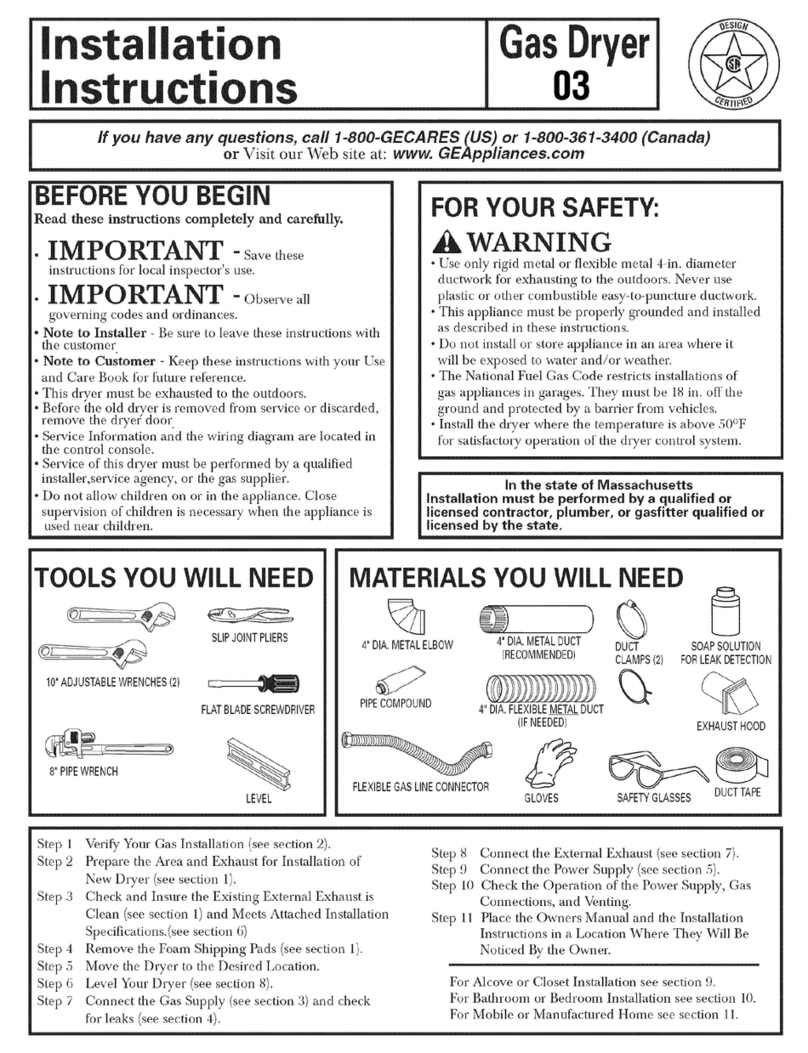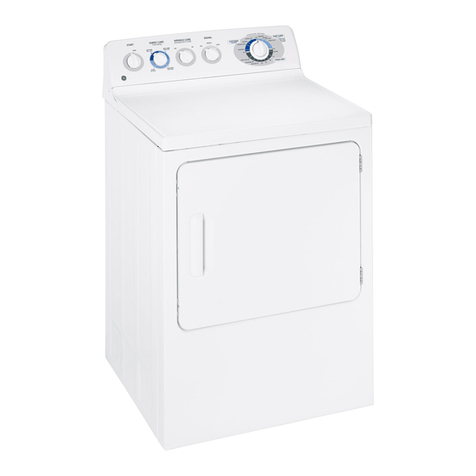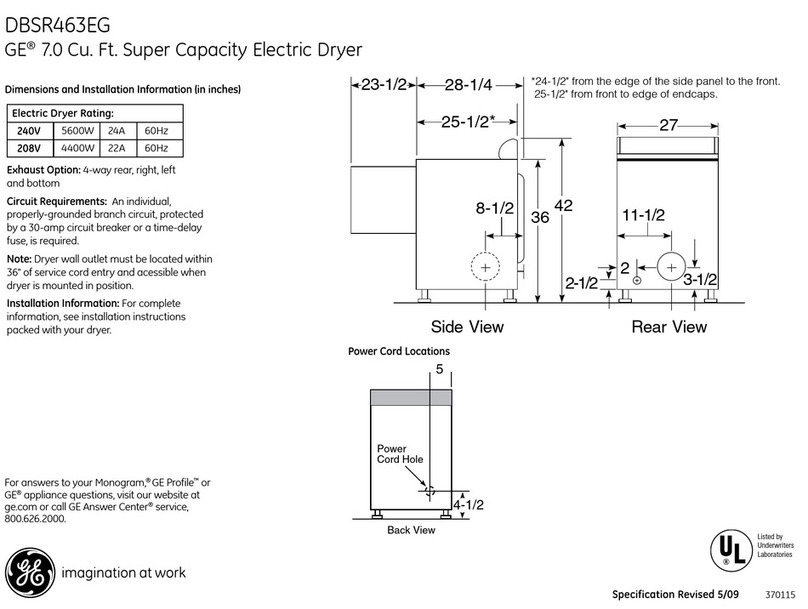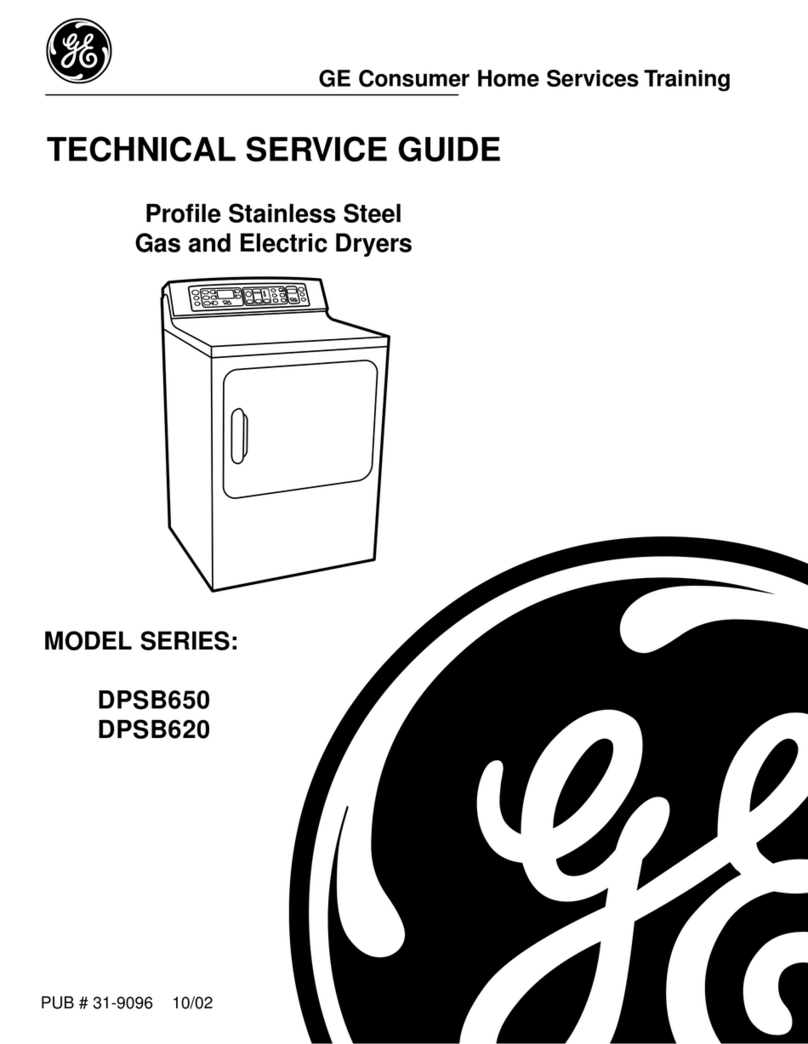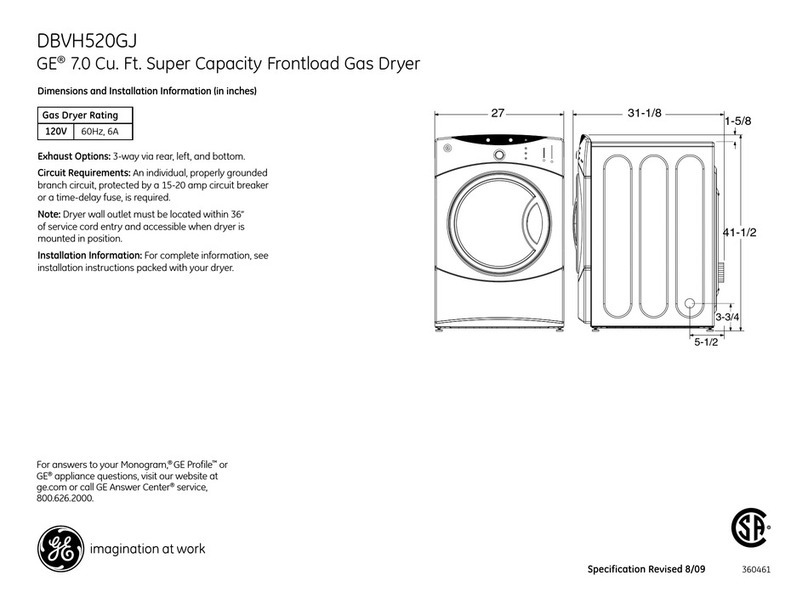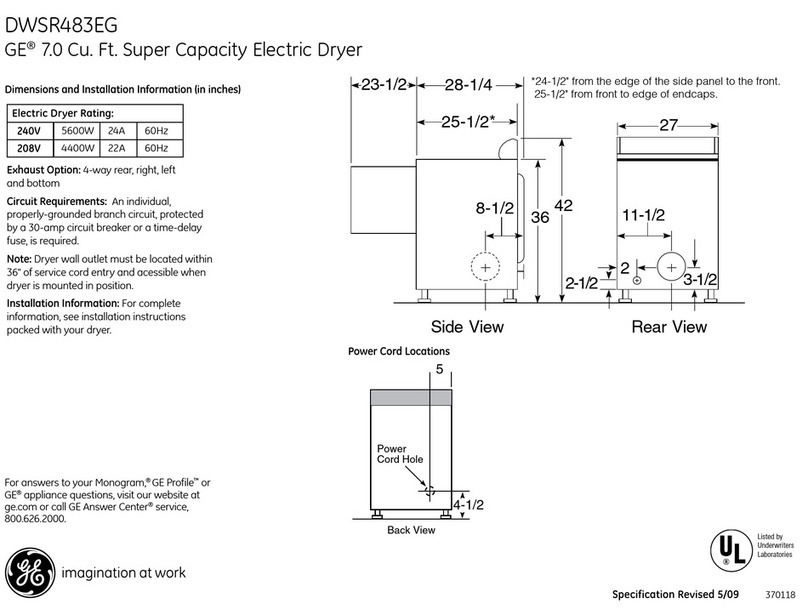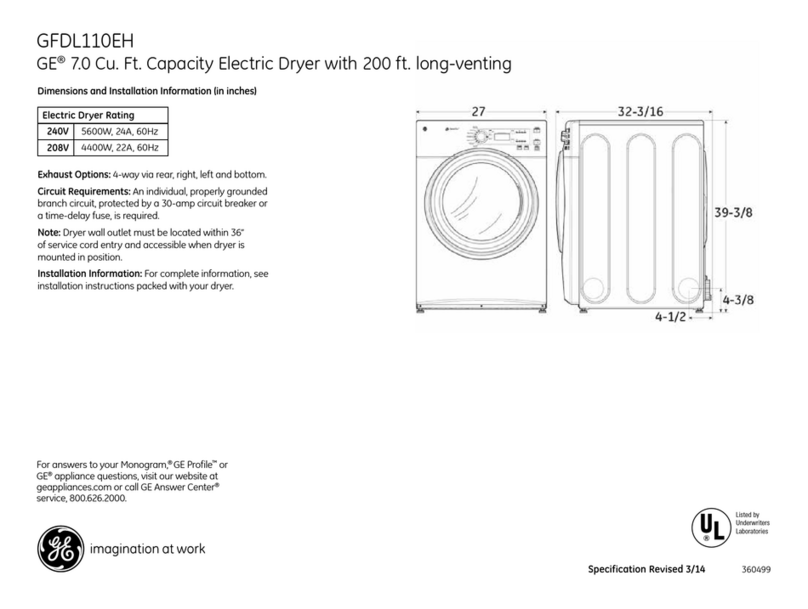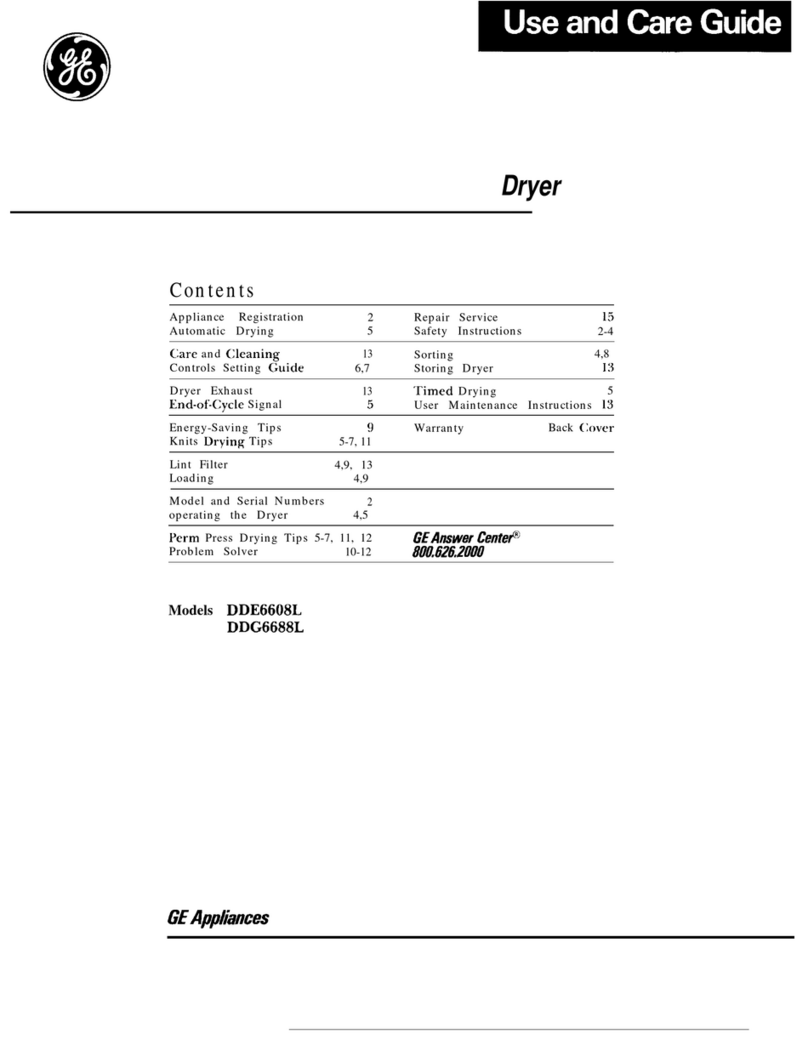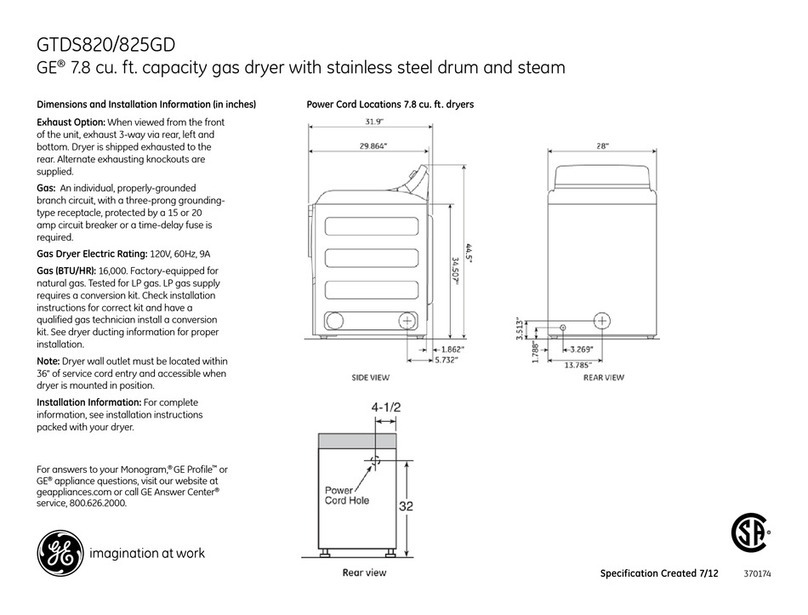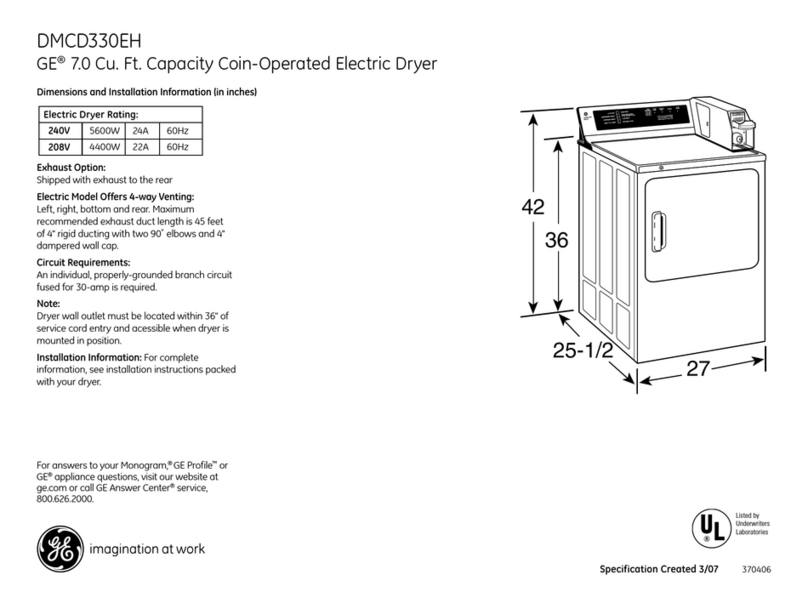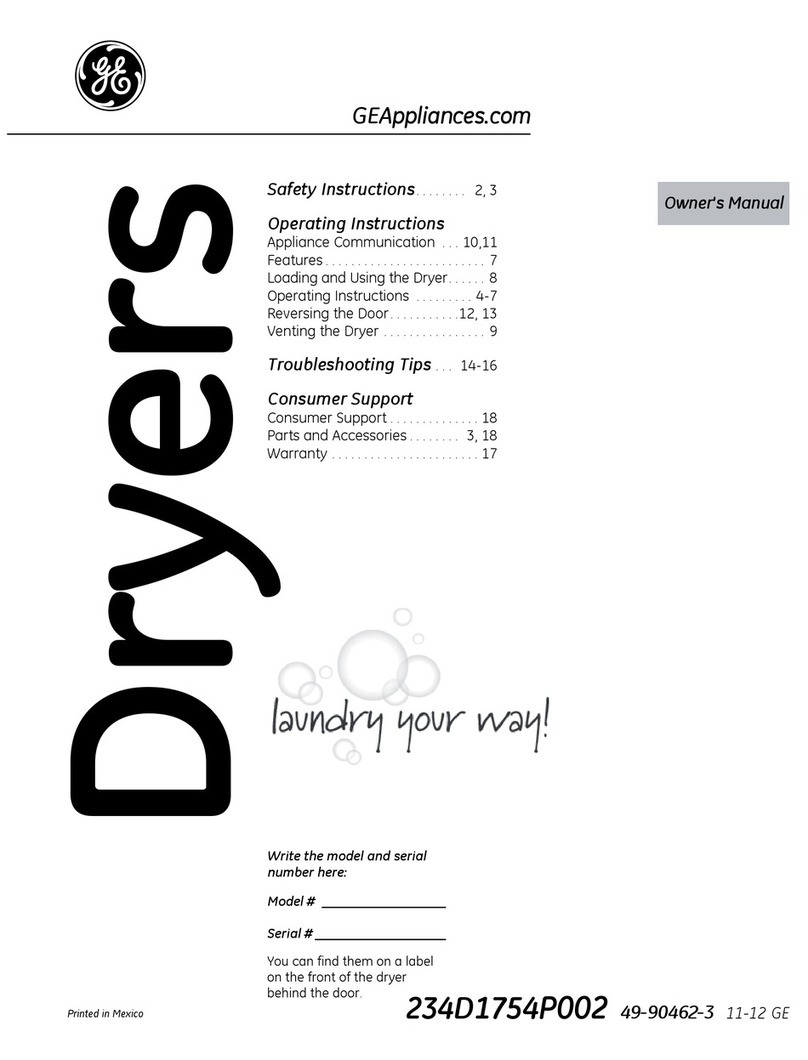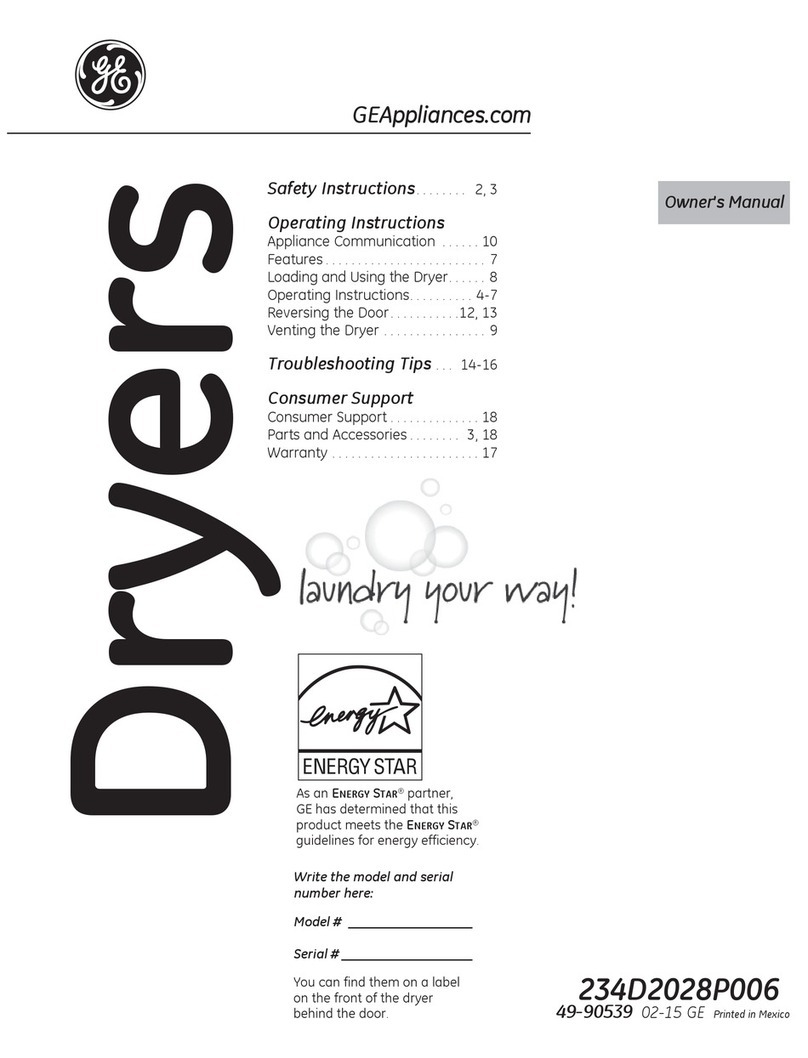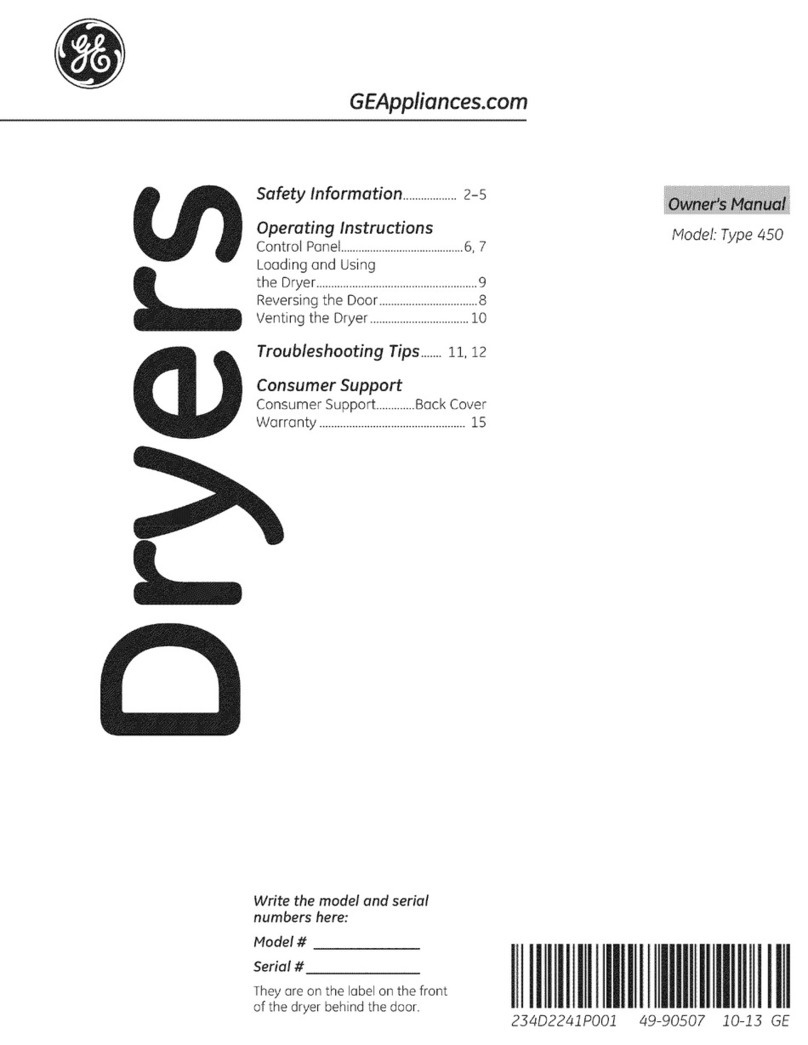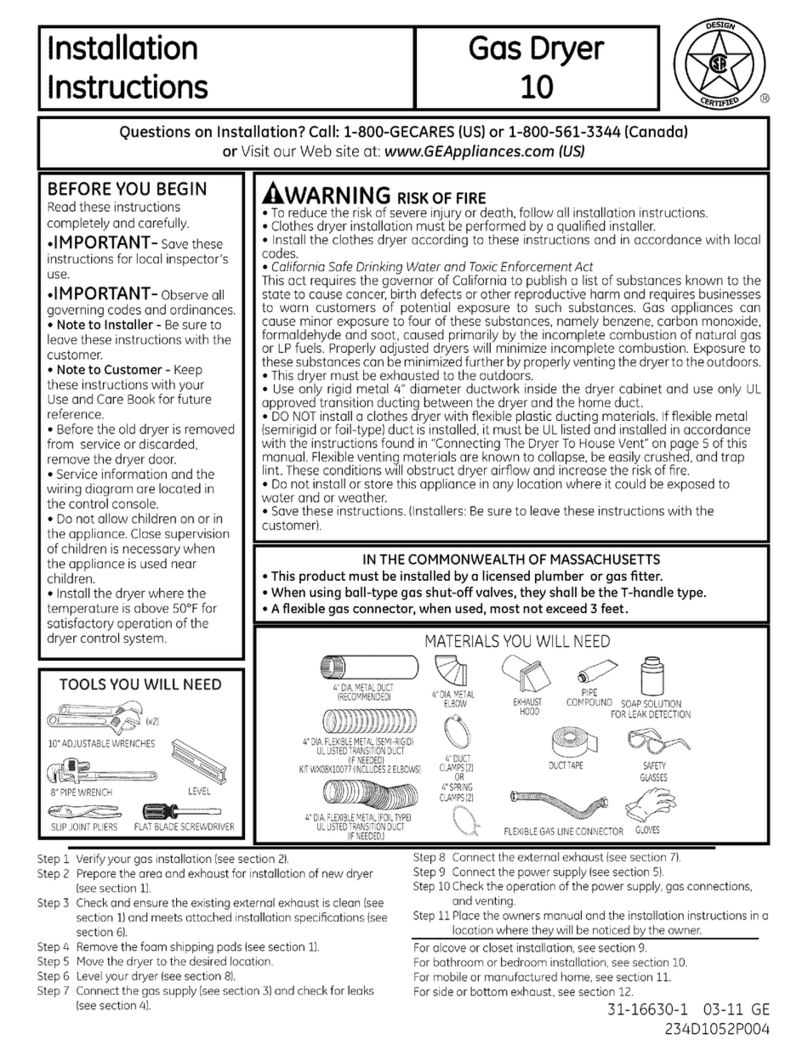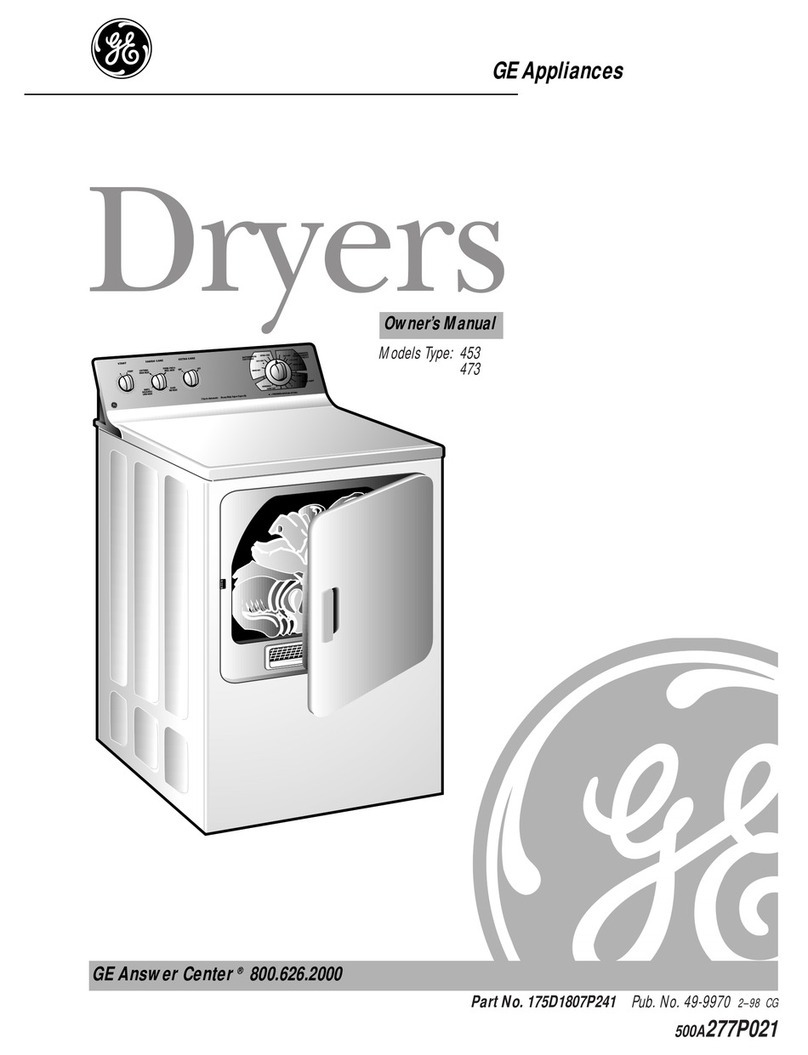
ADVERTENCIA RIESGO DE INCENDIO
• Para reducir el riesgo de una lesión grave o de muerte, cumpla con todas las
instrucciones de instalación.
• La instalación de la secadora debe efectuarla un instalador calicado.
• Instale la secadora de ropa de acuerdo con estas instrucciones y en cumplimiento
con los códigos locales.
• Ley de California para el agua potable y los tóxicos
Esta ley exige que el Gobernador de California publique una lista de sustancias que según
el estado provoquen cáncer, defectos congénitos u otros daños reproductivos, y exige a las
empresas que adviertan a los clientes sobre la exposición potencial a dichas sustancias.
Los aparatos a gas pueden provocar una exposición mínima a estas sustancias, a saber,
benceno, monóxido de carbono, formaldehído y hollín, generados principalmente por la
combustión incompleta de gas natural o combustibles LP. Si se ajustan bien las secadoras,
la combustión incompleta se verá minimizada. La exposición a estas sustancias puede
minimizarse aún más mediante una ventilación adecuada hacia el exterior.
• Esta secadora debe tener una salida al exterior.
• Utilice sólo un conducto rígido de metal de un diámetro de 4” dentro del gabinete de la secadora
y use sólo un conducto de transición aprobado por UL entre la secadora y el conducto doméstico.
•
NO instale una secadora de ropa con conductos de plástico exible. Si se instala un
conducto exible de metal (semi rígido o de tipo papel de aluminio), debe estar aprobado
por UL e instalarse de acuerdo con las instrucciones de “Cómo conectar la secadora a la
ventilación doméstica” de la página 5 de este manual. Los materiales de ventilación exibles
a menudo se desploman, se aplastan y atrapan pelusas. Estas condiciones obstruyen la
corriente de aire de la secadora e incrementan el riesgo de incendio.
• No instale o almacene este aparato en un lugar donde se vea expuesto al agua y/o
a las inclemencias del tiempo.
• Guarde estas instrucciones. (Instaladores: Asegúrese de dejar estas instrucciones
al consumidor).
EN EL ESTADO DE MASSACHUSETTS
• Este producto debe instalarlo un plomero o un gastero matriculado.
• Cuando use válvulas esféricas de cierre de gas, deberán ser del tipo de manija en T.
• Si se usa una conexión exible para gas, ésta no debe superar los 3 pies.
Instrucciones
de instalación
Secadora a gas
10
¿Preguntas sobre la instalación? Llame al: 1-800-GECARES (EE.UU.) o 1-800-561-3344 (Canadá)
o visite nuestro sitio Web en: www.GEAppliances.com (EE.UU.)
ANTES DE COMENZAR
Lea estas instrucciones por
completo y con detenimiento.
•IMPORTANTE - Guarde
estas instrucciones para el uso de
inspectores locales.
•IMPORTANTE - Siga todos
los códigos y ordenanzas vigentes.
• Nota al instalador - Asegúrese
de dejar estas instrucciones con el
consumidor.
• Nota al consumidor - Mantenga
estas instrucciones con el Manual de
uso y cuidados para referencia futura.
• Antes de que la secadora antigua
sea retirada del servicio o elimi-
nada, quítele la puerta.
•
La información sobre reparaciones
y el diagrama del cableado se en-
cuentran en la consola de control.
• No permita que niños se suban
o se metan dentro del aparato. Se
requiere una supervisión estricta
cuando el aparato es utilizado
cerca de niños.
• Instale la secadora en lugares
donde la temperatura sea mayor
a 50°F para un funcionamiento
satisfactorio del sistema de control
de la secadora.
31-16630-1 03-11 GE
234D1052P004
Paso 1 Verique su instalación de gas (ver sección 2).
Paso 2 Prepare el área y la salida para la instalación de la nueva
secadora (ver sección 1).
Paso 3 Verique y asegúrese de que la salida al exterior existente
esté limpia (ver sección 1) y que cumpla con las especica-
ciones de instalación incluidas (ver sección 6).
Paso 4 Quite las almohadillas de espuma para envío (ver sección 1).
Paso 5 Desplace la secadora a la ubicación deseada.
Paso 6 Nivele su secadora (ver sección 8).
Paso 7 Conecte el suministro de gas (ver sección 3) y controle la pres-
encia de pérdidas (ver sección 4).
Paso 8 Conecte la salida al exterior (ver sección 7).
Paso 9 Conecte el suministro de energía (ver sección 5).
Paso 10 Verique el funcionamiento del suministro de energía, las
conexiones de gas y la ventilación.
Paso 11 Coloque el manual del propietario y las instrucciones de
instalación en un lugar de fácil acceso para el propietario.
Para instalación en nicho o closet, ver sección 9.
Para instalación en baños o dormitorios, ver sección 10.
Para casas móviles o prefabricadas, ver sección 11.
Para salidas laterales o por la parte inferior, ver sección 12.
MATERIALES NECESARIOS
GUANTES
GAFAS
DE SEGURIDAD KIT DE CABLE
DE ENERGÍA
DE LA SECADORA
(NO PROVISTA CON
ABRAZADERAS
DE CONDUCTO DE 4" (2)
O
ABRAZADERAS
DE RESORTE DE 4" (2)
CAMPANA
DE SALIDA
ALIVIO DE TENSIÓN
DE ¾” RECONOCIDO
POR UL
CODO DE METAL
DE 4” DE DIÁ.
CONDUCTO DE TRANSICIÓN DE METAL
FLEXIBLE (SEMI RÍGIDO) DE 4” DE DIÁ.
APROBADO POR UL (SI FUERA NECESARIO)
KIT WX08X10077 (INCLUYE 2 CODOS)
CONDUCTO DE METAL DE 4” DE DIÁ
(RECOMENDADO)
CONDUCTO DE TRANSICIÓN DE METAL
FLEXIBLE (TIPO PAPEL DE ALUMINIO) DE 4” DE DIÁ.
APROBADO POR UL (SI FUERA NECESARIO)
CINTA ADHESIVA
CLASIFICADO POR
UL 120/240V, 30A
CON 3 O 4 CLAVIJAS.
IDENTIFIQUE EL TIPO
DE ENCHUFE SEGÚN
EL TOMACORRIENTE
DE LA VIVIENDA ANTES
DE COMPRAR EL CABLE.
LA SECADORA)
PLACA DE CUBIERTA DE 4”
(SI FUERA NECESARIO)
(KIT WE1M454)
NIVEL
LLAVE PARA TUBOS DE 8”
LLAVES AJUSTABLES DE 10”
(x2)
ALICATES DE
JUNTA DESLIZANTE DESTORNILLADOR PLANO








